The buzz around Agile Marketing has been growing since a group of forward-thinking marketers gathered in San Francisco in 2012 and wrote the Agile Marketing Manifesto. If you are unfamiliar with what Agile Marketing is, whether it’s a fit for your team or if it’s beneficial for your organization, keep reading. Here are some interesting definitions and concepts from around the web:
- Agile Marketing is “a project management framework that borrows the principles of agile software development and applies it to a marketing context. It achieves this by streamlining team structure, communication, processes, and workflows to maximize efficiency without sacrificing quality”. Co Schedule
- The seven values created by the Agile Marketing Manifesto are:
1. Validated learning over opinions and conventions.
2. Customer focused collaboration over silos and hierarchy.
3. Adaptive and iterative campaigns over Big-Bang campaigns.
4. The process of customer discovery over static prediction.
5. Flexible vs. rigid planning.
6. Responding to change over following a plan.
7. Many small experiments over a few large bets.
- “Each department will find the precise Agile format that works best for them” according to Workfront, but an Agile marketing implementation will have these four features in some form - Sprints, Stand up meetings, Board to track project progress, and Teamwork.

- According to Agile Sherpas, the benefits that Agile teams provide are spectacular:
- Transparency and visibility into their work throughout the development process.
- Predictable costs and schedule rather than ever-expanding scopes and timelines.
- Adaptation to changes in the market and business goals.
- Higher quality products with fewer bugs and defects.
- Agile Marketing differs from Traditional Marketing in four main tactics: “faced-paced, rapidly iterative, collaborative, and driven by testing and analytics”- Business 2 Community.
- There are simple ways in which anyone can start using agile by following three easy steps according to Andrea Fryrear at Marketing Insider Group:
- Build a Backlog: This is a strictly prioritized to-do list that you (or your team) will use to identify the highest value work to do next.
- Visualize Your Work: In other words, build a kanban board. If it’s just for you as an individual, start with “To Do, Doing, Done” as your columns.
- Set WIP Limits: Create some hard limits on how much you can work on at a given time.
Over the past decade, many traditional marketing leaders at companies like IBM, Spotify, 3M, and Google have moved into the agile framework and many more are in the process of transitioning. The results in doing better work more quickly with fewer missed deadlines was the main drive, who wouldn’t want to achieve that?
We are proud to be Agile Certified Professionals by the International Consortium for Agile (ICAgile), it’s in our DNA! We help our clients get started on their journey.
If you are considering to take a step into the agile world, our Agile Marketing Planning workshops is a great way to help you refocus your team.
About the Author

















![The Channel CRO [It’s What You Do with Brandi Starr]](https://content.cdntwrk.com/mediaproxy?url=https%3A%2F%2Fcontent.cdntwrk.com%2Ffiles%2FaHViPTgyNTIzJmNtZD1pdGVtZWRpdG9yaW1hZ2UmZmlsZW5hbWU9aXRlbWVkaXRvcmltYWdlXzY0ZTUwZDRkNzUxNGYucG5nJnZlcnNpb249MDAwMCZzaWc9YjM2ZWY5ZDVhNjUwY2RhMTNkMzM1MTY4OTFjNTY0YTI%25253D&size=1&version=1692732949&sig=896a21890cb589e6d4caf2b1fd16150f&default=hubs%2Ftilebg-blogs.jpg)

![Rebel Intrapreneur [Episode 45: Brandi Starr A New Generation of Executive]](https://content.cdntwrk.com/mediaproxy?url=https%3A%2F%2Fcontent.cdntwrk.com%2Ffiles%2FaHViPTgyNTIzJmNtZD1pdGVtZWRpdG9yaW1hZ2UmZmlsZW5hbWU9aXRlbWVkaXRvcmltYWdlXzY0YjA0OTUzMGIxZjUucG5nJnZlcnNpb249MDAwMCZzaWc9NjA1NDQ3YzNjZWYyOTkxYTY2MzgxODllMmU1ZmE0MTE%25253D&size=1&version=1695053332&sig=cd24ad7dc68bc455ce6258472b49f26b&default=hubs%2Ftilebg-blogs.jpg)

![Spamming Zero Podcast [E 51: How To Conquer Communications In Marketing Operations]](https://content.cdntwrk.com/mediaproxy?url=https%3A%2F%2Fcontent.cdntwrk.com%2Ffiles%2FaHViPTgyNTIzJmNtZD1pdGVtZWRpdG9yaW1hZ2UmZmlsZW5hbWU9aXRlbWVkaXRvcmltYWdlXzY0NzdhOTk1YzdkMzcucG5nJnZlcnNpb249MDAwMCZzaWc9NTE1MmZkNGM1YmU1MTg1NDdiNjczOTQ3NDE3MjhkNzE%25253D&size=1&version=1688062578&sig=de26b17088ca14016cb182437cfb42d2&default=hubs%2Ftilebg-blogs.jpg)
![The Adaptive Executive Podcast [E 32: Using Language of Service with Tegrita’s Rolly Keenan]](https://content.cdntwrk.com/mediaproxy?url=https%3A%2F%2Fcontent.cdntwrk.com%2Ffiles%2FaHViPTgyNTIzJmNtZD1pdGVtZWRpdG9yaW1hZ2UmZmlsZW5hbWU9aXRlbWVkaXRvcmltYWdlXzY0NWUzYzczMWI0NDAucG5nJnZlcnNpb249MDAwMCZzaWc9MDA1ZTgzYTc4YWRkMmQzODAyOGYzM2ZkMmU1N2I3ZGE%25253D&size=1&version=1683901167&sig=d468c97df1ecadd8226dc4e37393f7fd&default=hubs%2Ftilebg-blogs.jpg)



